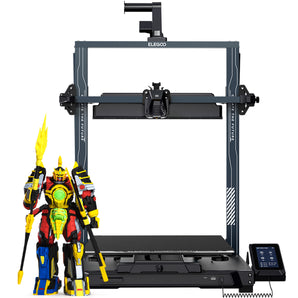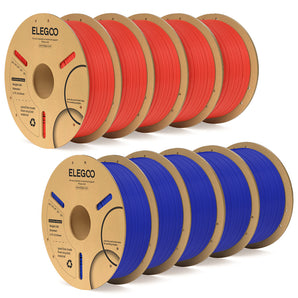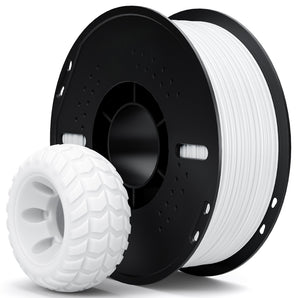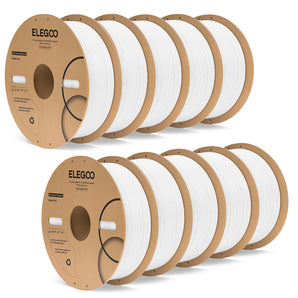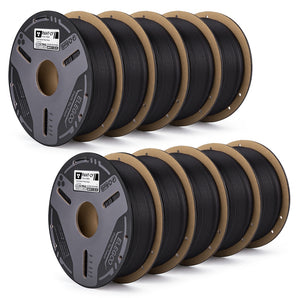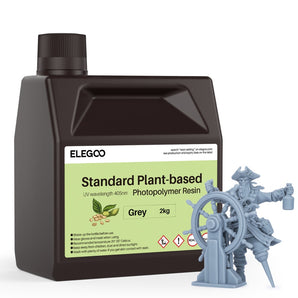
Source: https://www.elegoo.com/
3D Printing has come a very long way from its early inception in the early 80s. What began as a daring invention has gone on to become one of the greatest technological advancements of this century. Although it is still undergoing developments and improvements, what 3D printing has achieved so far cannot be overlooked, and the future looks very promising.
To better understand how the particular technology functions, we have to dig deep and look at the top 3D Printing software being used around the world. We will look at the features of each and what they are used for. If you have always been curious to know more about 3D Printing, then you are in the right place.
Autodesk Fusion 360 - Best Overall

Source: https://www.autodesk.com/
Autodesk Fusion 360 is one of the most loved 3D Printing software around. It has been voted to be the most powerful software for 3D printing, and this means any machine that is used to run must be very powerful. The good part, however, is that it has the best seamless integration with all the tools one needs to make the best 3D designs.
You are able to combine engineering, design, and manufacturing into one part, and this is what makes it very popular. The accessibility and convenience it offers the people make the entire process much easier. Autodesk Fusion 360 is ideal for people who are looking to make efficient mechanical parts.
Features
- Full design controls
- Powerful modeling tools
- A helpful history tree for easy access
- Allows for collaboration with other designers using other platforms
- Allows for early simulations
Pros
- Has a functioning free version for non-commercial use
- There’s a version for students
Cons
- Too complicated
- Functionality changes happen without warning
AutoCAD - Best High-End

Source: https://www.autodesk.com/
Another Autodesk software designed for professionals looking for a high end product with everything they need to make unique designs. It is a versatile product that comes with unlimited functionalities, a big reason why it is loved by professionals with good purchasing power. AutoCAD is best suited for people who are already good at designing complex structures and have experience in programming models using algorithm methods. In a nutshell, you have to be really experienced in 3D to handle AutoCAD.
Features
- Wide selection of 3D modeling tools
- Web and smartphone integration
- Easy file format conversions
- It comes preloaded with plugins
Pros
- Unlimited tools
- save s time
- Accurate measurements
- Easy documentation
Cons
- Too expensive
- Steep learning curve
- Training courses are equally costly
- Color limitations
Ultimaker Cura - Best for Beginners

Source: https://ultimaker.com/
This is an open-source tool that was designed to bring some balance in the field and provide an affordable option for 3D printing enthusiasts and professionals. It may not be as iconic or powerful as Autodesk, but it does get the job done, especially if you are a beginner, thanks to its gentle learning curve. Users also have good control of the customizations they can do, and this boosts creativity a great deal. Being open-source, Ultimaker Cura is free, and anyone with internet access can use it without any restrictions.
Features
- Easy monitoring options of all 3D printing processes happening
- Adjustment tools
- Compatible with all printing formats
- Unlimited material library
- Easy tutorials built into the software
Pros
- It is free
- Constant developer updates
- It is open source
Cons
- It is very slow
- It lacks some vital high-end features necessary for quality prints
TinkerCAD - Best for Complex Designs

Source: https://www.tinkercad.com/
3D Printing software is not made the same, some are designed for certain objectives, and as far as complexity is concerned, the TinkerCAD is the king. This is web-based modeling and designing 3D tools that are simple to use and understand with the ability to create any crazy idea you may have in your head. Despite its ability to design complex models, using it is quite the opposite. Very simple, with straightforward instructions that even a beginner can understand through its easy user guide.
Features
- STL files support
- Importation of external 2D and 3D models
- It can execute laser cutting
- Ample cloud storage
- Good user interface
- Gentle learning curve with in-built tutorials
Pros
- Great modeling tools
- Lightweight
- Free beginner software
Cons
- It is online-based only
- Limited rendering options
MeshLab - Best Features

Source: https://www.meshlab.net/
This is another open-source 3D tool that is best suited for making 3D meshes. It allows users to leverage all its amazing functions to edit, provide texture, handle conversations easily, and render directly. You also get the chance to slice up designs the way you want before sending them to the render.
MeshLab has a free version, and this means anyone can have full access to some of these features. It is only compatible with Mac and Windows; unfortunately, those that use other platforms will have to make do with another option.
Features
- 3D reconstruction capabilities for making stunning designs
- 3D texturing and color mapping
- Best for offsetting, closing, 3D printing, and hollowing
- It gives people options and tools for cleaning the mesh well
- A helpful measuring tool for accurate designs
Pros
- It comes with a lot of features
- It can work with other software like AutoDesk and Pro-E Creo with the ability to seamlessly switch files without any compatibility issues.
Cons
- The navigation can be rough for someone who has never used it before
- Some buttons come with multiple functions requiring the user to switch them every time.
FreeCAD - Best for Training

Source: https://www.freecadweb.org/
FreeCAD is an open-source 3D modeling software that grants the user the freedom to design real-life shapes and designs with very good details. The software was designed as a scriptable CAD platform and is best used by people who are into architecture and the creation of electrical structures.
Users can adjust the dimension of a product and even sketch geometrically accurate shapes that will be replicated in the real product to the minutes of details. Their integration with formulae-based models is the reason why architects and engineers love using FreeCAD for all their design needs.
Features
- It comes with parametric components that make designing easier
- Creates a very detailed history archive for easy retrieval
- Compatible with geometric computations for more accuracy
- It is supported by Mac, Windows, and Linux platforms
- It can be used for a range of applications that require a lot of details
- It comes with a plethora of reliable tools that can help a beginner get the hang of 3D modeling quickly.
Pros
- It is free
- Great functionality
- It can create .stl files that are compatible with most 3D printers
- It is a parametric software that allows you to make adjustments to the model when you see fit.
Cons
- Steep learning curve for beginners
- The user interface is too basic
Creo - Best for Manufacturers

Source: https://www.ptc.com/en/
Creo was developed by Parametric Technology Corporation and is now considered to be among the best 3D printing software in the market today. One reason for its growing popularity is the great user interface and the many helpful tools that are easy to figure out and use. You get things like motion, thermal and structural tools that combine seamlessly to help the user bring the best of their creative side to the fore.
You also get tools that allow you to simulate the product you are making, giving you a real-life preview of what the final render will look like even before you finish adding the needed touches.
Features
- Real-life simulations
- Multiple design tools
- Equipped with topology optimization software
- Data leveraging from models
- Allows models to be embedded with all the necessary data that defines the product better
Pros
- Quick 3rd-party imports
- Great array of design tools
- Can show you a 3D preview of what you are making
- Revising models and drawings is much easier
Cons
- The STL model is not that smooth like in most of the other software
- It can be overwhelming for a new user
- It isn’t compatible with systems that have a lower configuration
Solidworks - Best for Industrial Modelling

Source: https://www.solidworks.com/
Developed by Dassault Systemes, Solidworks is a choice that is loved by many 3D designers due to its many tools and features that promote efficient design. It is suited for making industrial models and has the following features.
Features
- Equipped with reverse engineering tools
- Makes use of NURBS to make detailed curves
- Offers 3DEXPERIENCE capabilities
- Regular updates that come with better features every time
- Straightforward design that supports industrial modeling
Pros
- Great parametric modeling
- Intuitive interface
- Fantastic support network
- Regular updates
Cons
- Most STL files require separate programs to load
- Crashes too much
CATIA - Best Multi-Platform

Source: https://www.3ds.com/
CATIA is another Dassault program that was created with the sole purpose of meeting the internal needs of the aviation company. The software went on to garner some good reviews and went public to become one of the most reliable multi-platform suites.
Features
- Ability to handle heavy work
- Users can keep track of changes for better revision later on
- Data management
- Allows for online collaboration
Pros
- Great for extreme designs
- Editing option
Cons
- The user interface needs improvements
- It is expensive
- Not ideal for beginners
OpenSCAD - Best for Programmers

Source: https://openscad.org/
This is an open-source platform for making efficient 3D models for professionals who need to work on complex projects. OpenSCAD comes with a very intuitive user interface and combines programming into it for more complex designs. The following are some of its features.
Features
- CSG and 2D extrusion
- Great online community
- Linus, Windows, and Mac compatible
Pros
- Easy to use
- Can construct elaborate designs
- Highly constructive tools
Cons
- Not good for beginners
Conclusion
Every software mentioned in this list has its good and bad sides, and the choice comes down to the nature of the task at hand and personal preference. You need to understand 3D printers and how they work first before diving into the software work. For more information, check out our website and have all your inquiries answered at any time of the day.




























